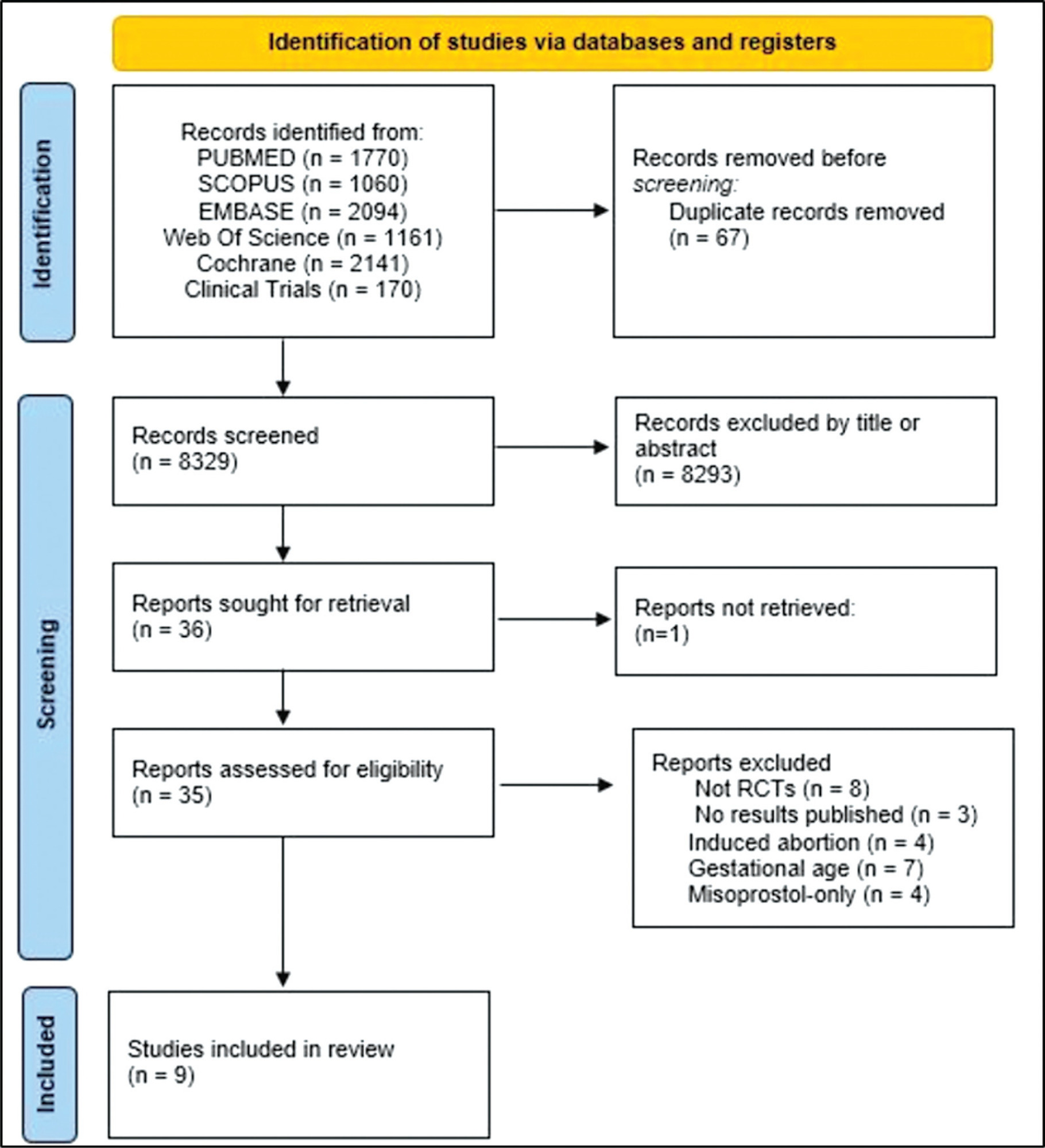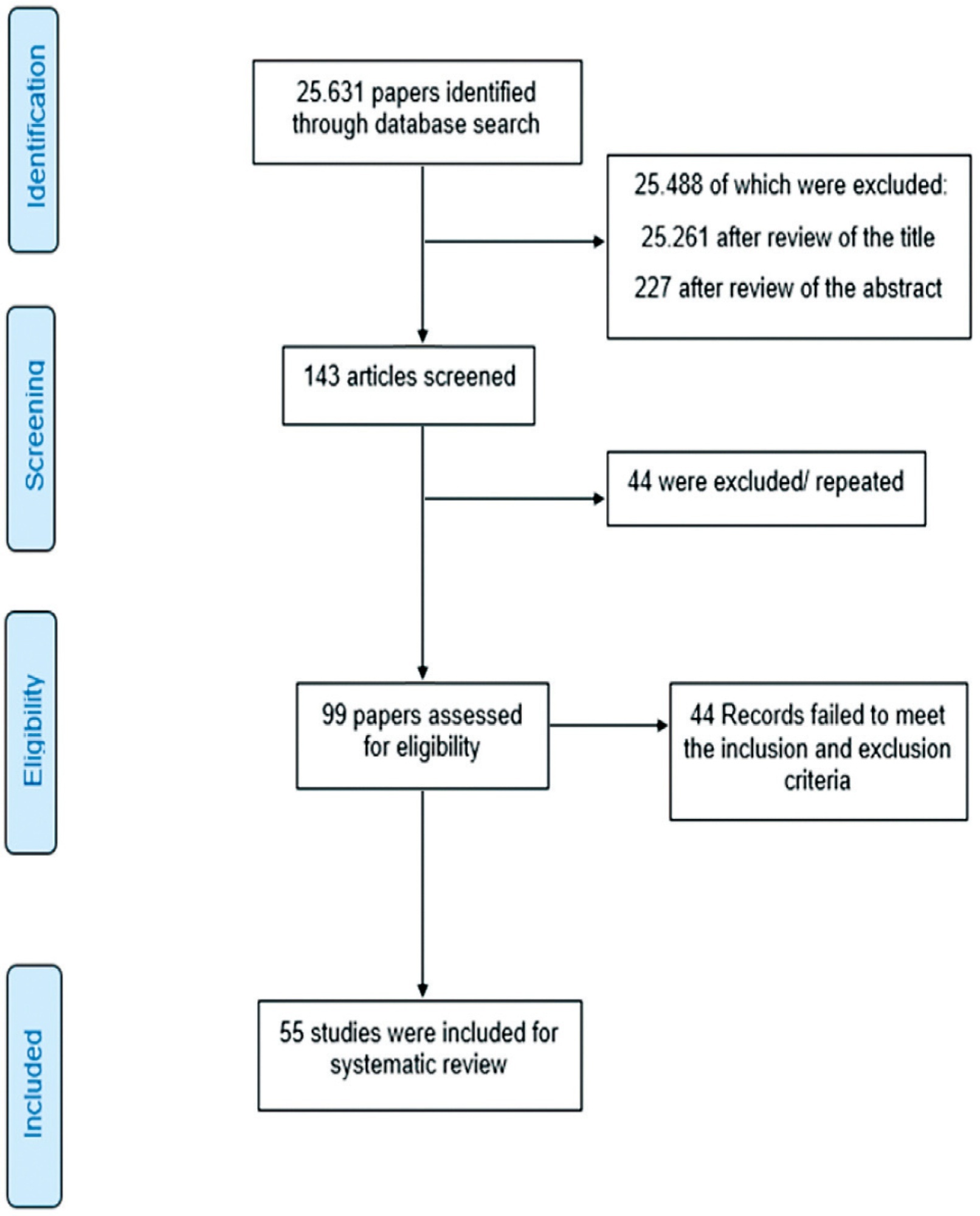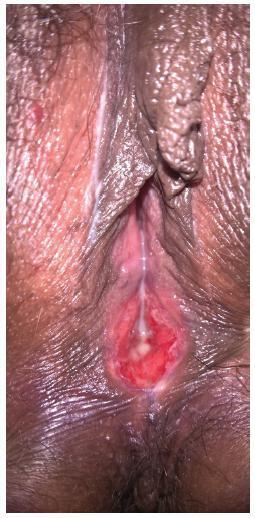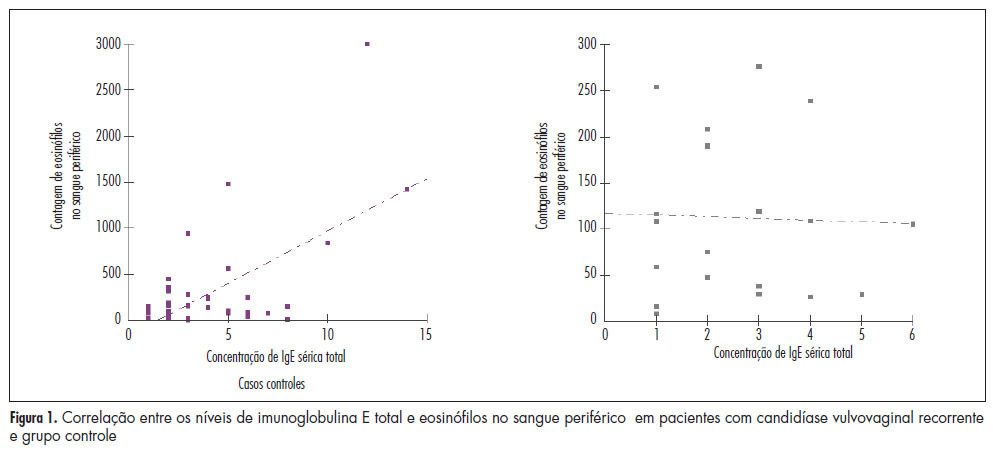You searched for:"Ana Katherine Gonçalves"
We found (9) results for your search.-
Review Article
Efficacy, Safety, and Acceptability of Misoprostol in the Treatment of Incomplete Miscarriage: A Systematic Review and Meta-analysis
Rev Bras Ginecol Obstet. 2023;45(12):808-817
Summary
Review ArticleEfficacy, Safety, and Acceptability of Misoprostol in the Treatment of Incomplete Miscarriage: A Systematic Review and Meta-analysis
Rev Bras Ginecol Obstet. 2023;45(12):808-817
Views67See moreAbstract
Objective
To assess the efficacy, safety, and acceptability of misoprostol in the treatment of incomplete miscarriage.
Data sources
The PubMed, Scopus, Embase, Web of Science, Cochrane Library, and Clinical Trials databases (clinicaltrials.gov) were searched for the relevant articles, and search strategies were developed using a combination of thematic Medical Subject Headings terms and text words. The last search was conducted on July 4, 2022. No language restrictions were applied.
Selection of studies
Randomized clinical trials with patients of gestational age up to 6/7 weeks with a diagnosis of incomplete abortion and who were managed with at least 1 of the 3 types of treatment studied were included. A total of 8,087 studies were screened.
Data collection
Data were synthesized using the statistical package Review Manager V.5.1 (The Cochrane Collaboration, Oxford, United Kingdom). For dichotomous outcomes, the odds ratio (OR) and 95% confidence interval (CI) were derived for each study. Heterogeneity between the trial results was evaluated using the standard test, I2 statistic.
Data synthesis
When comparing misoprostol with medical vacuum aspiration (MVA), the rate of complete abortion was higher in the MVA group (OR = 0.16; 95%CI = 0.07–0.36). Hemorrhage or heavy bleeding was more common in the misoprostol group (OR = 3.00; 95%CI = 1.96–4.59), but pain after treatment was more common in patients treated with MVA (OR = 0.65; 95%CI = 0.52–0.80). No statistically significant differences were observed in the general acceptability of the treatments.
Conclusion
Misoprostol has been determined as a safe option with good acceptance by patients.

-
Review Article
Efficacy of Hormonal and Nonhormonal Approaches to Vaginal Atrophy and Sexual Dysfunctions in Postmenopausal Women: A Systematic Review
Rev Bras Ginecol Obstet. 2022;44(10):986-994
Summary
Review ArticleEfficacy of Hormonal and Nonhormonal Approaches to Vaginal Atrophy and Sexual Dysfunctions in Postmenopausal Women: A Systematic Review
Rev Bras Ginecol Obstet. 2022;44(10):986-994
Views4See moreAbstract
Objective
To evaluate the efficacy of the hormonal and nonhormonal approaches to symptoms of sexual dysfunction and vaginal atrophy in postmenopausal women.
Data Sources
We conducted a search on the PubMed, Embase, Scopus, Web of Science, SciELO, the Cochrane Central Register of Controlled Trials (CENTRAL), and Cumulative Index to Nursing and Allied Health Literature (CINAHL) databases, as well as on clinical trial databases. We analyzed studies published between 1996 and May 30, 2020. No language restrictions were applied.
Selection of Studies
We selected randomized clinical trials that evaluated the treatment of sexual dysfunction in postmenopausal women.
Data Collection
Three authors (ACAS, APFC, and JL) reviewed each article based on its title and abstract. Relevant data were subsequently taken from the full-text article. Any discrepancies during the review were resolved by consensus between all the listed authors.
Data Synthesis
A total of 55 studies were included in the systematic review. The approaches tested to treat sexual dysfunction were as follows: lubricants and moisturizers (18 studies); phytoestrogens (14 studies); dehydroepiandrosterone (DHEA; 8 studies); ospemifene (5 studies); vaginal testosterone (4 studies); pelvic floor muscle exercises (2 studies); oxytocin (2 studies); vaginal CO2 laser (2 studies); lidocaine (1 study); and vitamin E vaginal suppository (1 study).
Conclusion
We identified literature that lacks coherence in terms of the proposed treatments and selected outcome measures. Despite the great diversity in treatment modalities and outcome measures, the present systematic review can shed light on potential targets for the treatment, which is deemed necessary for sexual dysfunction, assuming that most randomized trials were evaluated with a low risk of bias according to the Cochrane Collaboration risk of bias tool. The present review is registered with the International Prospective Register of Systematic Reviews (PROSPERO; CRD42018100488).

-
Letter to the Editor
The Real Impact of the Coronavirus Disease 2019 (covid-19) on the Pregnancy Outcome
Rev Bras Ginecol Obstet. 2020;42(5):303-304
Summary
Letter to the EditorThe Real Impact of the Coronavirus Disease 2019 (covid-19) on the Pregnancy Outcome
Rev Bras Ginecol Obstet. 2020;42(5):303-304
Views3See moreAbstract
The COVID-19 outbreak is increasing around the world in the number of cases, deaths, and affected countries. Currently, the knowledge regarding the clinical impact of COVID-19 on maternal, fetal, and placental aspects of pregnancy is minimal. Although the elderly and men were the most affected population, in previous situations, such as the 2009 H1N1 influenza pandemic and the Ebola epidemic, pregnant women were more likely to develop complications than nonpregnant women. There are unanswered questions specific to pregnant women, such as whether pregnant women are more severely affected and whether intrauterine transmission occurs. Additional information is needed to inform key decisions, such as whether pregnant health care workers should receive special consideration, whether to separate infected mothers and their new borns, and whether it is safe for infected women to breastfeed.
-
Case Report
Vulvar Hemangioma: Case Report
Rev Bras Ginecol Obstet. 2018;40(6):369-371
Summary
Case ReportVulvar Hemangioma: Case Report
Rev Bras Ginecol Obstet. 2018;40(6):369-371
Views4See moreAbstract
Hemangioma is a benign neoplasm that may affect the vulva, and it can cause functional or emotional disability. This article reports the case of a 52-year-old female patient with a history of a genital ulcer for the past 3 years and who had undergone various treatments with creams and ointments. The patient was biopsied and diagnosed with vulvar hemangioma and was subsequently submitted to surgical excision of the lesion. We emphasize the importance of following the steps of the differential diagnosis and proceeding with a surgical approach only if necessary.

-
Original Article
Prevalence of Sexual Dysfunction among Expectant Women
Rev Bras Ginecol Obstet. 2016;38(11):559-563
Summary
Original ArticlePrevalence of Sexual Dysfunction among Expectant Women
Rev Bras Ginecol Obstet. 2016;38(11):559-563
Views6See moreAbstract
Purpose
To identify pregnancy as a causative factor of sexual dysfunction among expectant women.
Methods
A prospective study with 225 expectant mothers seen in the prenatal clinic of a federal university. Sexual function was evaluated by means of the Female Sexual Function Index (FSFI), and all domains were analyzed (desire, arousal, lubrication, orgasm, satisfaction, and pain). Initially, a univariate analysis of the sample was done. The averages for each domain according to the risk of sexual dysfunction (FSFI ≤ 26.5) were compared using the Student’s t-test for independent samples. The strength of the correlation between sexual dysfunction and all sociodemographic, clinical and behavioral variables was measured by the Chi-Square (X2) test. Then, odds ratios (ORs) and their confidence intervals were assigned to perform a bivariate analysis. Any p values less than 0.05 were considered significant.
Results
Approximately two-thirds of the women (66.7%) showed signs of risk of sexual dysfunction (FSFI ≤ 26.5). Within these cases, all sexual dysfunction domains (desire, arousal, lubrication, orgasm, satisfaction, and pain) were found to be statistically significant (p < 0.001). The domains most affected were desire (2.67), satisfaction (2.71) and arousal (2.78).
Conclusions
Pregnancy appears to be an important causative factor of sexual dysfunction among pregnant women.
-
Original Article
High Risk HPV E6/E7 Oncoprotein Expression in Women with High Grade Squamous Intraepithelial Lesion
Rev Bras Ginecol Obstet. 2016;38(3):154-159
Summary
Original ArticleHigh Risk HPV E6/E7 Oncoprotein Expression in Women with High Grade Squamous Intraepithelial Lesion
Rev Bras Ginecol Obstet. 2016;38(3):154-159
Views1See morePurpose
To correlate the expression of high-risk HPV E6 mRNA with pap smear, colposcopy, and biopsy results in women with high grade squamous intraepithelial lesion (HSIL).
Methods
A cross-sectional study was performed on women referred for primary care services after cytological diagnosis of HSIL. We evaluated the expression of E6/E7 mRNA of HPV types 16,18,31,33, and 45 and correlated the results with those of Pap smear, colposcopy, and biopsy. For amplification/detection of mRNA E6 / E7 we used NucliSENSEasyQ kit to detect HPV mRNA by polymerase chain reaction with primers/ probes for HPV types 16, 18, 31, 33, and 45.
Results
Out of 128 valid tests, the results of 30 (23.4%) tests were negative and 98 (70%) tests were positive. Only one type of HPV was detected in 87.7% of the E6/E7 mRNA positive cases. HPV16 was detected in 61.2% of the cases, followed by HPV33 (26.5%), HPV31 (17.3%), HPV18 (10%), and HPV45 (4.08%). Pap smear tests revealed that the E6/E7 test was positive in 107 (83.8%) women with atypical squamous cells – high grade (ASC-H), HSIL, or higher. The E6/E7 test was positive in 69 (57.5%) specimens presenting negative cytology results. When analyzing the association with colposcopy results, the frequency of positive E6/E7 results increased with the severity of the injury, ranging from 57.1% in women without colposcopy-detected injury to 86.5% in those with higher levels of colposcopy findings. Of the 111 women who underwent biopsy and E6/E7 testing, the E6/E7 test was positive in 84.7% of the women who presented with lesions of cervical intraepithelial neoplasia (CIN) grade 2 or higher. Finally, 41.2% of women with a negative biopsy presented a positive E6/E7 test.
Conclusions
E6/E7mRNA expression was higher in women with HSIL and CIN grade 2 or higher.
-
Original Article
Impact of sexual and reproductive health theme insertion in the undergraduate medical
Rev Bras Ginecol Obstet. 2014;36(3):107-112
Summary
Original ArticleImpact of sexual and reproductive health theme insertion in the undergraduate medical
Rev Bras Ginecol Obstet. 2014;36(3):107-112
DOI 10.1590/S0100-72032014000300003
Views1See morePURPOSE:
To evaluate the impact of sexual and reproductive health theme insertion in the undergraduate medical curriculum at a Brazilian public university.
METHODS:
We developed an instrument for cognitive assessment in sexual and reproductive health based on the subjects addressed in the optional curriculum component Reproductive Health, resulting in an objective multiple choice test containing 27 items. The selected topics were: human, sexual and reproductive rights (HSRR), sexuality, institutional violence, gender, sexual violence, conception, contraception, abortion/legal interruption of pregnancy, maternal mortality and sexually transmitted infections (STIs) – HIV/AIDS. The subjects were grouped into three dimensions of knowledge: HSRR, legal/institutional and biomedical. Two multivariate models were adjusted in the analysis of covariance.
RESULTS:
The study included 183 students, 127 of the group who took the elective curriculum course reproductive health (RH Group) and 56 who did not (Non-RH Group). Ninety-six students (52.5%) were males and 87 (47.5%) were females. Mean age was 24.7±1.9 years for the RH Group and 24.4±2.6 for the Non-RH Group. The average performance of the SR Group was higher than that of Non-RH subjects regarding the following subjects: HSRR, sexuality, institutional violence, sexual violence, abortion/legal interruption, and STDs – HIV/AIDS. There was no gender difference in performance, except for the theme maternal mortality, in which males scored worse than females (6.9±0.2 and 7.8±0.2, respectively; p<0.05).
CONCLUSIONS:
The participation of students in the elective curriculum component Reproductive Health was associated with better performance in some dimensions of cognitive assessment, suggesting a positive impact of this initiative on general medical education.
-
Original Article
Eosinophilia in peripheral blood of women with recurrent vaginal candidiasis
Rev Bras Ginecol Obstet. 2013;35(10):453-457
Summary
Original ArticleEosinophilia in peripheral blood of women with recurrent vaginal candidiasis
Rev Bras Ginecol Obstet. 2013;35(10):453-457
DOI 10.1590/S0100-72032013001000005
Views1See morePURPOSE: To quantify the number of defense cells and immunoglobulin E (IgE) levels in peripheral blood sampled from women with recurrent vulvovaginal candidiasis. METHODS: A cross-sectional study was conducted on 60 women, 40 with vulvovaginal candidiasis and 20 controls. The defense cells were identified using an impedance system combined with flow cytometry and total and specific IgE was measured by chemiluminescence. The Mann-Whitney test was used for nominal variables and the Spearman test was used to determine the correlation of IgE concentration and eosinophils in peripheral blood. RESULTS: The number of eosinophils in peripheral blood from patients with recurrent vulvovaginal candidiasis, 302.60 (±253.07), was significantly higher compared to control, 175.75 (±109.24) (p=0.037). Serum levels of total and specific IgE were similar in the groups of women with and without recurrent vulvovaginal candidiasis (p=0.361). However, there was a moderate positive correlation between eosinophils and total serum IgE in the candidiasis group (r=0.25). CONCLUSION: Women with recurrent vulvovaginal candidiasis are more likely to have eosinophils in peripheral blood.

Search
Search in:
Tag Cloud
breast (42) breast cancer (42) breast neoplasms (95) Cesarean section (72) endometriosis (66) infertility (56) Maternal mortality (43) menopause (82) obesity (58) postpartum period (40) pregnancy (225) Pregnancy complications (99) Prenatal care (68) prenatal diagnosis (50) Prevalence (41) Quality of life (51) risk factors (94) ultrasonography (79) urinary incontinence (40) women's health (48)


